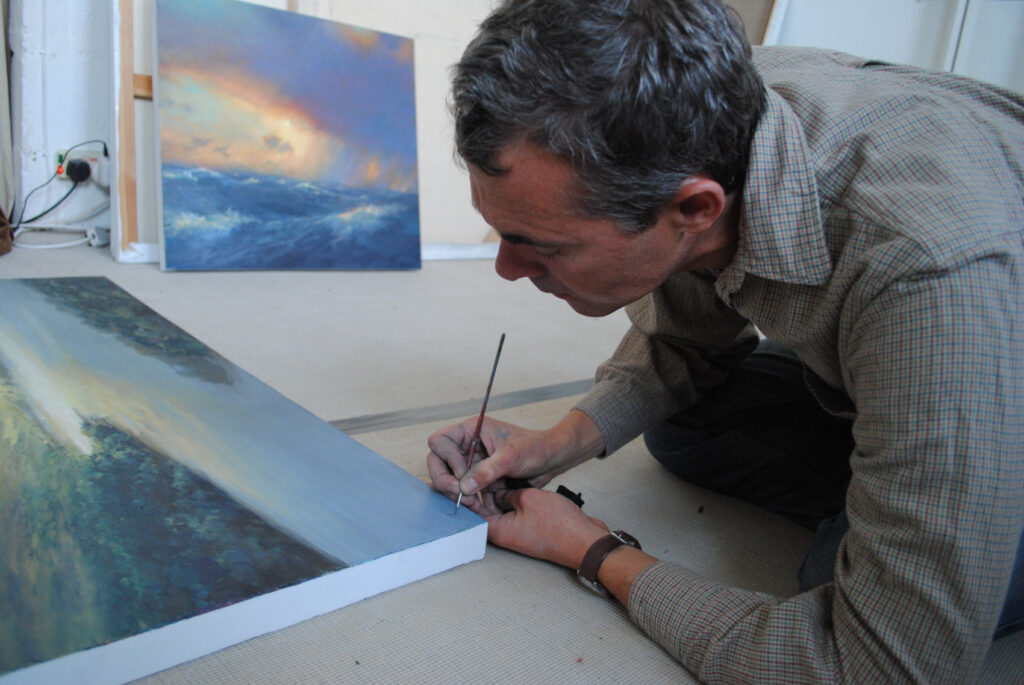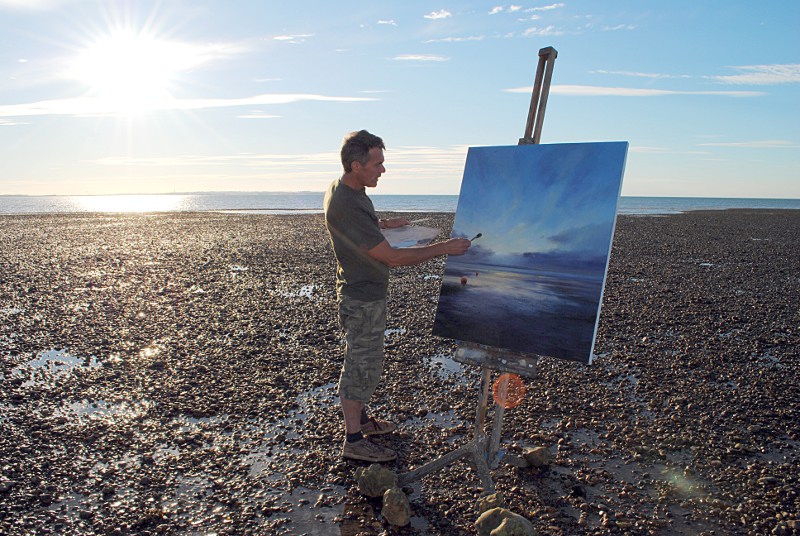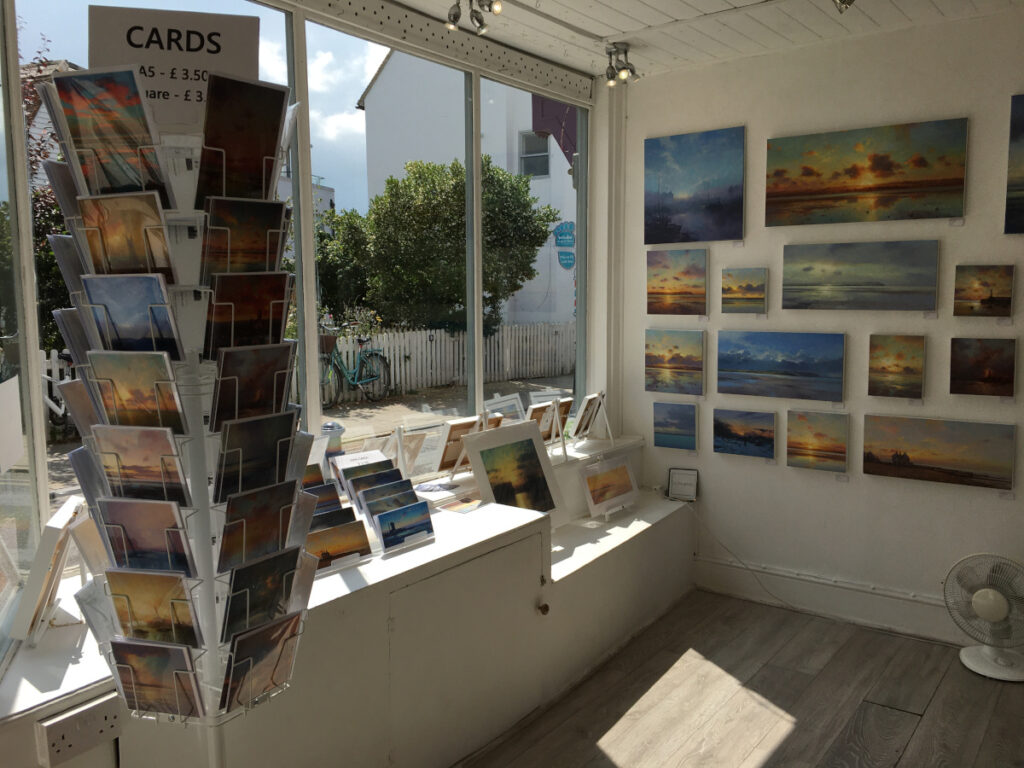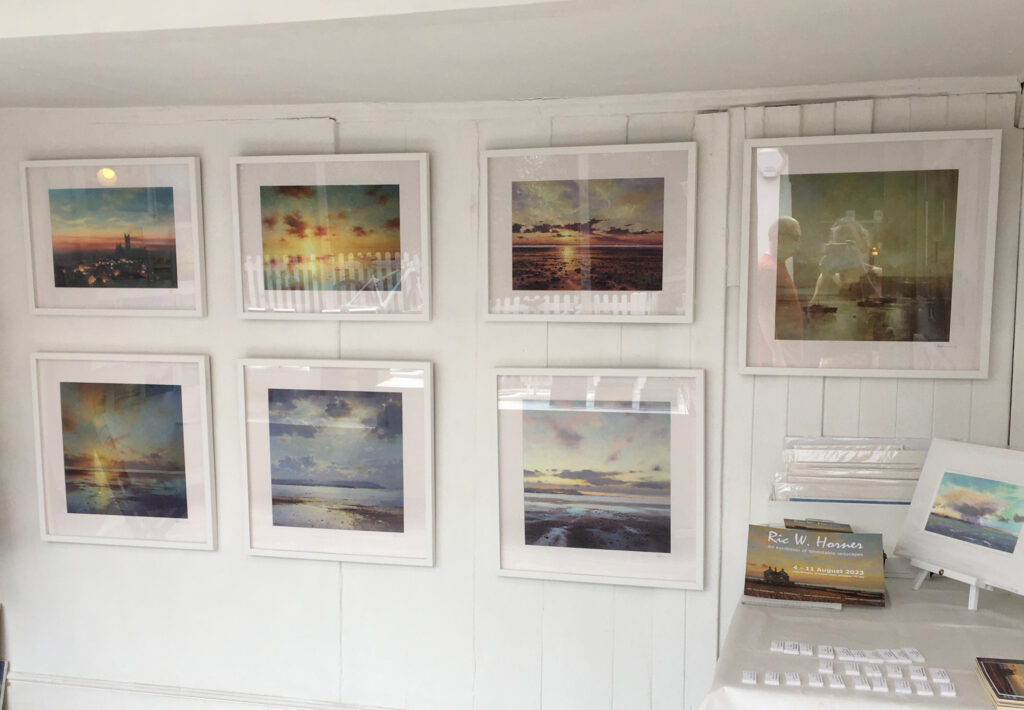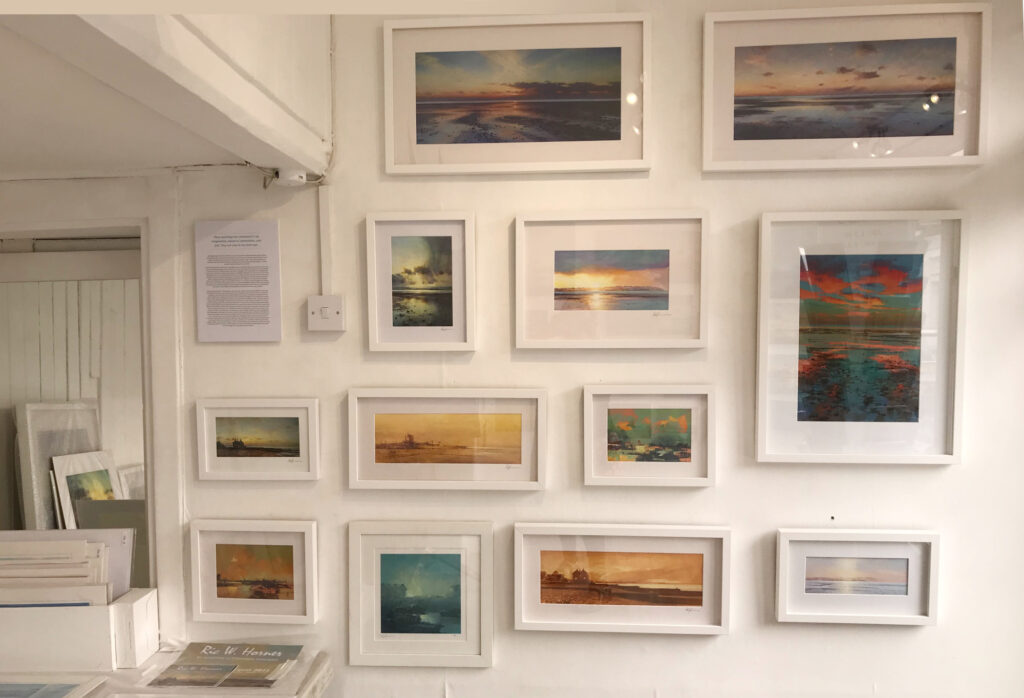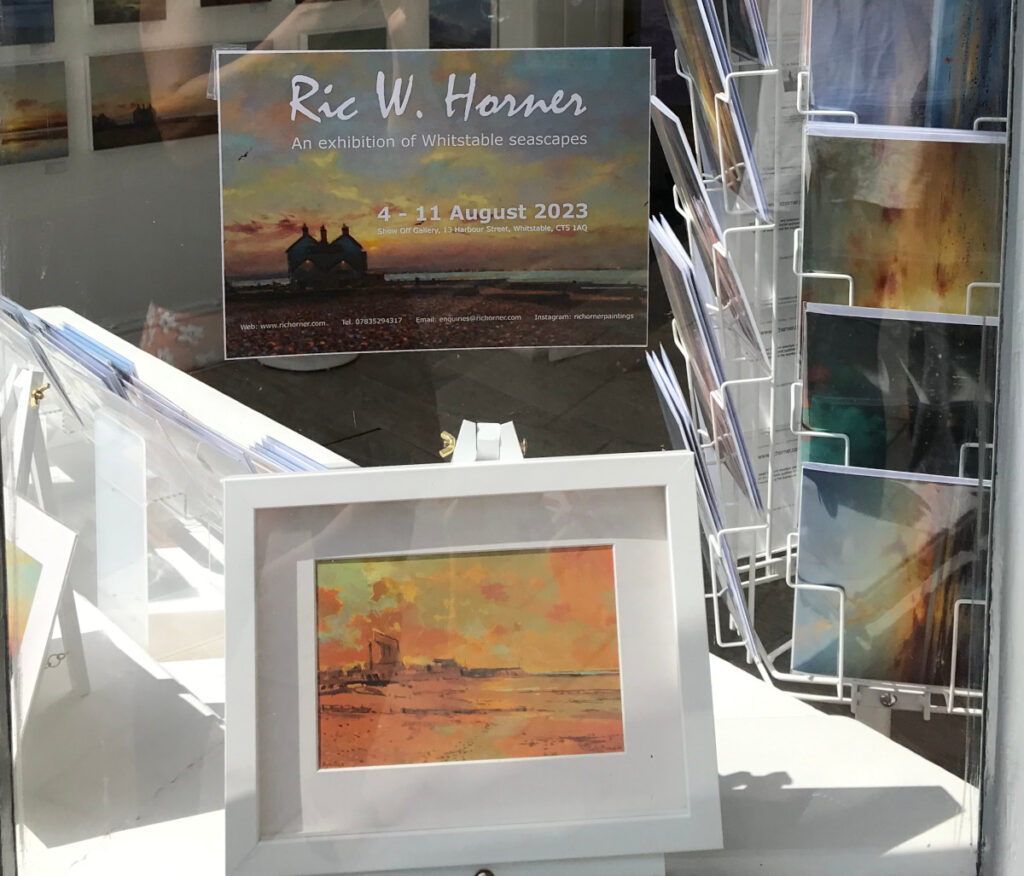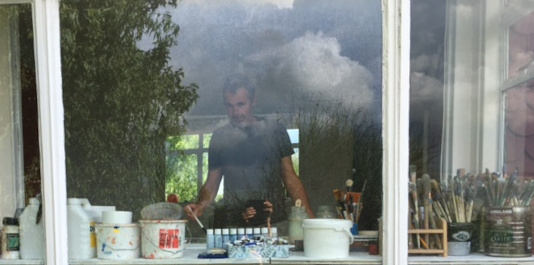
It has now been 11 years that painter Ric W. Horner has lived in the late Dan Sherrin’s quirky cottage on The Saxon Shore Way in Whitstable, a long-distance footpath in England, which starts at Gravesend, Kent, and traces the coast of South-East England for 163 miles in total. He is one in a long line of artists , writers and novelists that made the town their home, for reasons such as the gorgeous light and stunning sunsets.
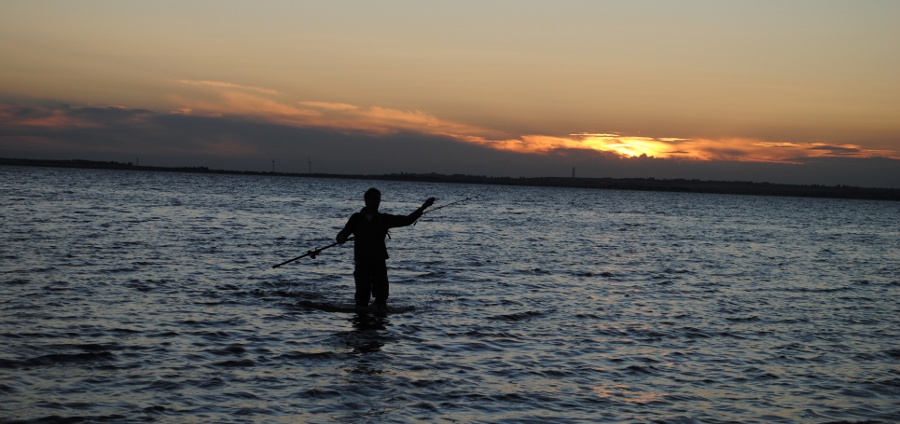
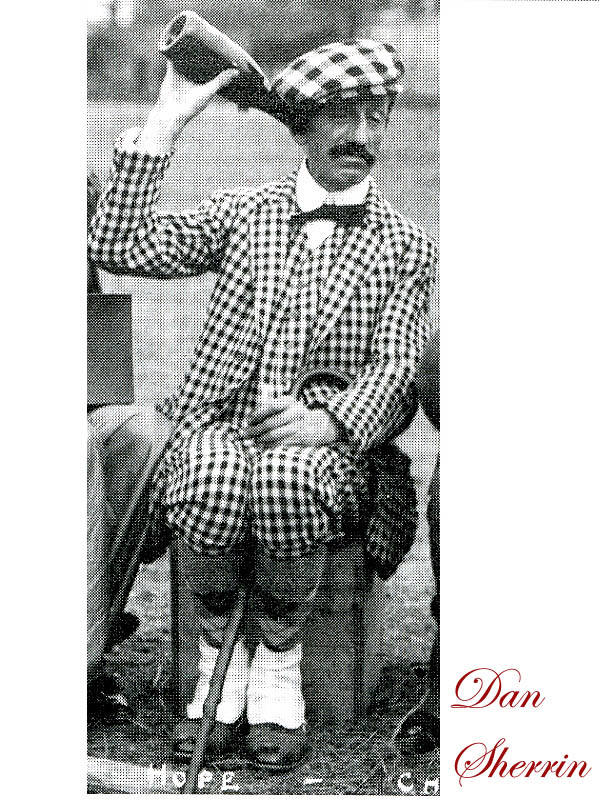
Eccentric painter Dan Sherrin (1869 – 1940) was an artist that could not be missed about the town, as he insisted on wearing the most outrageously chequer plus-fours and his love of beer was legendary. Dan was also a famous self-publicist of the most humorous kind, a practical joker who not only poked fun at those in authority – he even built his own airplane and created a spoof fire brigade!
One of Dan’s paintings still hangs in Buckingham Palace, as he was once commissioned by King George V. Furthermore. An elderly neighbour who lived nearby in Preston Parade Seasalter, has told Ric that he recalls seeing Winston Churchill plus entourage on the little foot bridge on Preston Parade, viewing the newly installed gun battery, which was right in front of the house in about 1943.
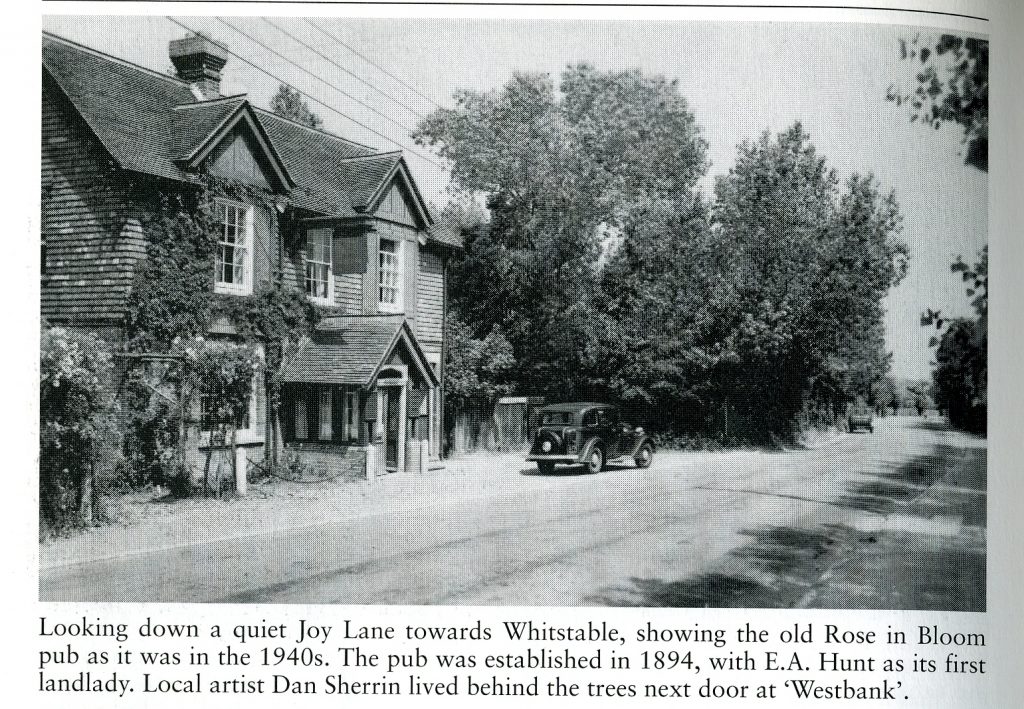
___________________________________________________________
Now working from Mr Sherrin’s space overlooking the sea, Ric’s records the dramatic changes in mood, atmosphere and dynamic cloud formation one can observe in the sky above our heads. He says about it: “My paintings have much to do with the changing energy of weather; encompassing all sorts of environmental conditions, which can range massively from attractive, peaceful and scenic to threatening and dangerous.”

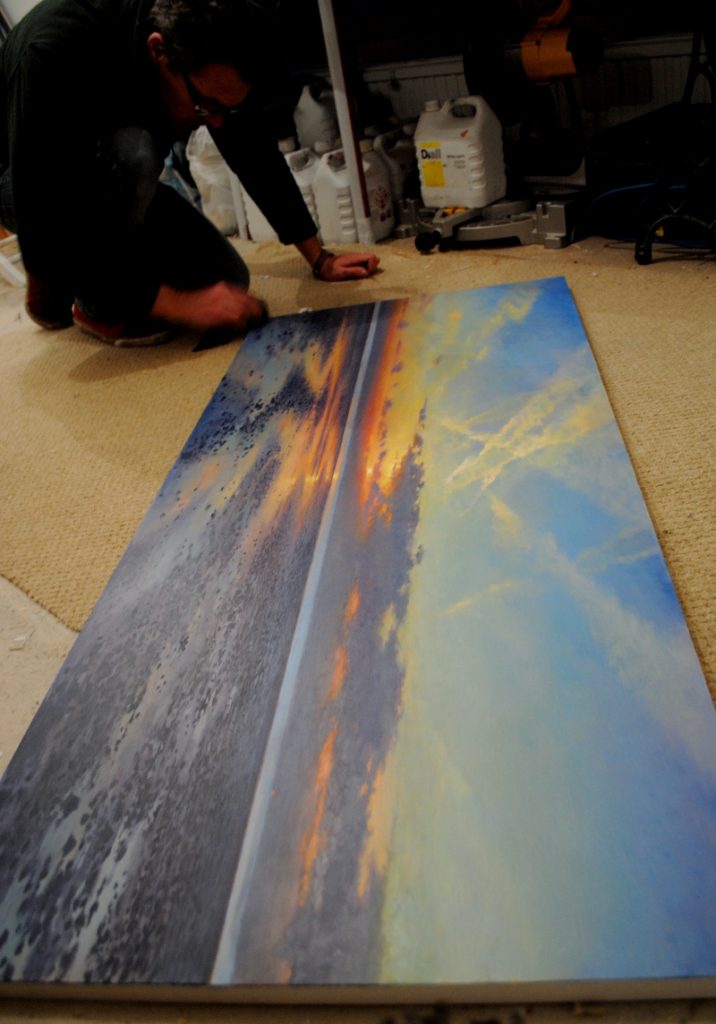
“Since moving into the late artist Dan Sherrin’s old cottage, I have set up my studio at the front of the house, which overlooks the sea. This has changed my working practice profoundly, as I now have a myriad of subject matter in front of me and I am less dependent on notes and colour sketches. I can now work directly on canvas from my subject and study in detail various sea states and “light events” which may have previously evaded me. It’s become possible to study storms in greater detail and track showers and their influence on the sea in some degree of comfort. Sadly, despite the house’s prominence and history, time and gravity has taken its toll, leaving it bereft of level floors, so when I first moved in, the horizon appeared to lean when looking out!”
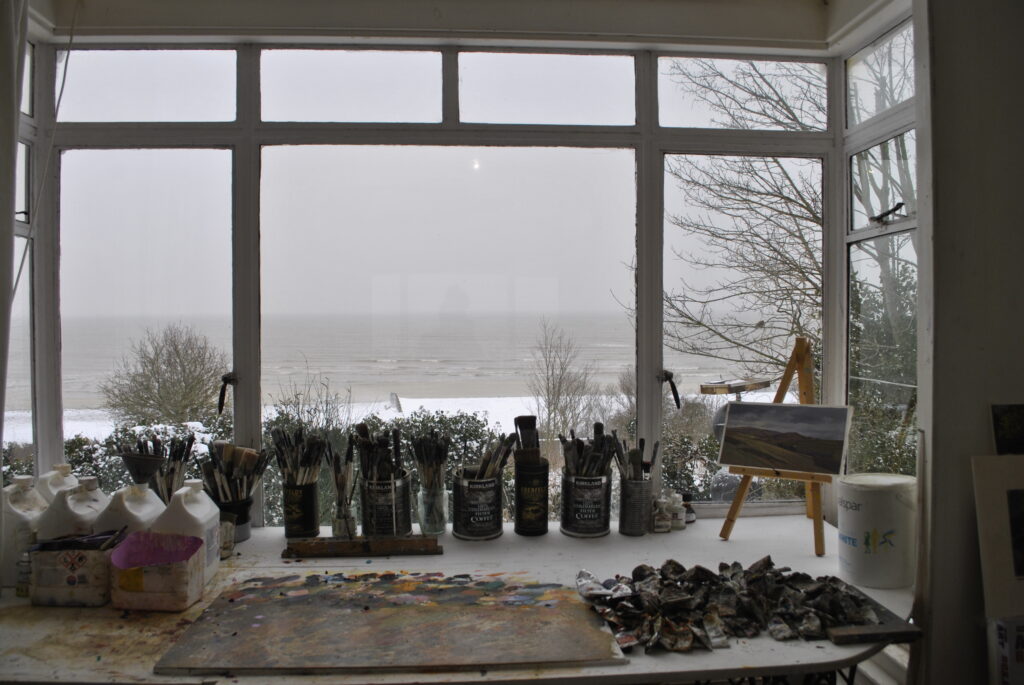
The famous painter J.M.W. Turner (1775–1851) described the sunsets along the North Kent coast as some of the best in the world and just like Turner, Ric continues to explore the unique light conditions found in this area.

In February 2024 another acclaimed artist has worked on Whitstable West Beach. Originally intended for placement in a tidal area along the adjacent coastline, internationally known sculptor Jason De Caires Taylor installed his sculpture on private land only five minutes away from Ric’s studio outside The Old Neptune Pub, since he encountered resistance from local authorities. The artwork features an activist group of people and is called Sirens of Sewage.
It stands in support to SOS Whitstable, a group of 10 local activists who have been working tirelessly to hold water companies to account and make the sea safer along the Kent coast.
